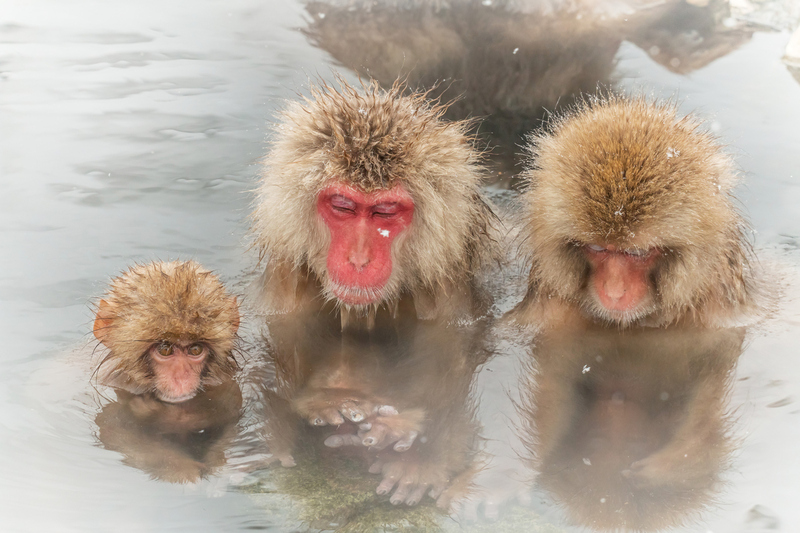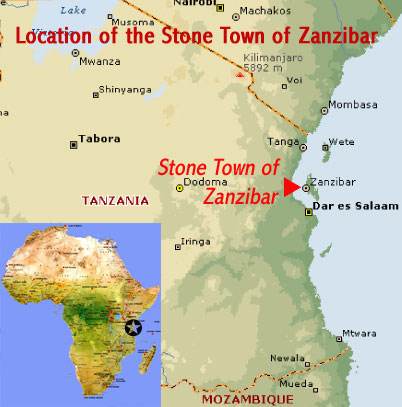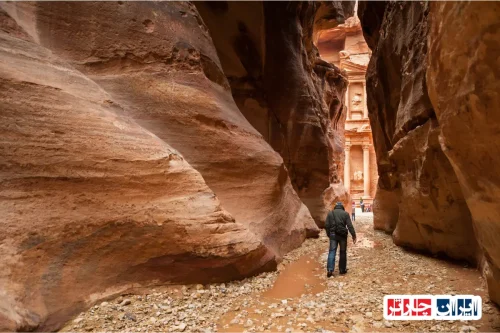Discover the Unique Charm of Jigokudani Monkey Park Nagano Prefecture Japan
Jigokudani Monkey Park Nagano Prefecture Japan offers a truly extraordinary experience where visitors can observe Japanese macaques, also known as snow monkeys, bathing in natural hot springs amidst a stunning winter landscape. Located in the heart of Nagano Prefecture, this renowned park is a sanctuary for these fascinating creatures, showcasing their social behaviors and adaptation to cold climates. The park’s unique environment, with snow-covered mountains and steaming water, provides an unforgettable setting for wildlife enthusiasts and travelers seeking a close encounter with nature. Exploring Jigokudani Monkey Park Nagano Prefecture Japan allows visitors to witness the harmony between wildlife and pristine natural surroundings, making it a must-visit destination for those interested in Japan’s rich biodiversity and scenic beauty. For more information and to plan your trip, visit Jigokudani Monkey Park-Iran Charter. Experience the magic of Jigokudani and immerse yourself in Japan’s natural wonders, all while enjoying the comfort and safety provided by Irancharter’s travel services. Whether you’re a wildlife lover or a traveler seeking unique cultural experiences, Jigokudani Monkey Park Nagano Prefecture Japan promises memories that last a lifetime.

Complete Guide to Visiting Jigokudani Monkey Park Nagano Prefecture Japan
Discover the fascinating world of the Jigokudani Monkey Park in Nagano Prefecture, Japan, a unique destination where wild Japanese macaques, also known as snow monkeys, bathe in natural hot springs amidst snowy landscapes. This iconic park offers visitors an unparalleled opportunity to observe these intelligent creatures in their natural habitat, providing a memorable experience for nature lovers and wildlife enthusiasts alike. Located in the heart of Nagano, the park is easily accessible and offers a variety of viewing points to witness the daily routines of the snow monkeys, especially during winter when the scenery is breathtakingly beautiful.
History and Formation of the Jigokudani Monkey Park Nagano Prefecture Japan
The Jigokudani Monkey Park was established in the 1960s with the primary goal of protecting and studying the Japanese macaques in their natural environment. Initially, it served as a research site for scientists interested in understanding the social behaviors and adaptation strategies of the snow monkeys. Over time, the park gained popularity among tourists who flocked to see the monkeys enjoying the warm waters of natural hot springs during cold winter months. Conservation efforts and environmental management have since been implemented to ensure the sustainability of this unique habitat, making it a symbol of successful wildlife preservation in Japan.
Habitat and Natural Life of Snow Monkeys in Nagano
The snow monkeys of Nagano live in a rugged mountainous environment characterized by heavy snowfall and cold temperatures. Their habitat includes dense forests and volcanic hot springs, which they use to keep warm during winter. These primates are highly social, living in large groups with complex hierarchies and interactions. They forage for food such as berries, insects, and plants, but during winter, they rely heavily on the thermal waters to survive the harsh climate. Protecting this delicate ecosystem is vital for maintaining the health and stability of the monkey populations and their environment.
What to Expect When Watching Snow Monkeys Bathing in Hot Springs
One of the most captivating sights at the Jigokudani Monkey Park is observing the monkeys relaxing in the natural hot springs. Visitors can witness groups of macaques soaking in the warm waters, grooming each other, and socializing in a tranquil setting surrounded by snow-covered scenery. The best time to see this behavior is during winter, especially from December to February, when snow blankets the landscape. To ensure a respectful experience, visitors should maintain a safe distance, avoid feeding or touching the animals, and follow park guidelines to protect both visitors and wildlife. Capturing photographs of these moments can be rewarding, but it’s essential to prioritize safety and animal welfare.
Practical Tips and Safety Guidelines for Visiting the Park
Before heading to the Jigokudani Monkey Park, plan your trip by checking the park’s opening hours and weather conditions. Dress warmly with layered clothing, waterproof boots, and gloves, as winter temperatures can be very low. It’s advisable to carry a camera with a good zoom lens to capture the monkeys from a distance. Respect the wildlife by not feeding or approaching too closely, and always follow the instructions provided by park staff. Staying on designated paths and avoiding sudden movements help ensure a safe and enjoyable visit for everyone. Remember, the goal is to observe and appreciate these animals in their natural environment without causing disturbance.
Best Seasons to Visit Jigokudani Monkey Park Nagano Prefecture Japan
The optimal time to visit the park is during winter, from December to February, when the snowy landscape creates a stunning backdrop for the hot spring bathing monkeys. The sight of snow-covered trees and steaming waters offers a magical experience that attracts many tourists. Autumn, with its vibrant foliage, also provides excellent photo opportunities and a different perspective on the park’s scenery. Spring and summer are less crowded, and while the snow monkeys are still present, their bathing behavior is less frequent. Planning your visit according to the season allows you to enjoy the park’s natural beauty and wildlife at their best.
Environmental Impact and Conservation Efforts in the Area
Protecting the natural habitat of the snow monkeys is a priority for local authorities and conservation organizations. Measures include limiting visitor numbers, enforcing strict guidelines to prevent disturbance, and maintaining the thermal springs to ensure they remain clean and accessible. Educational programs aim to raise awareness about the importance of wildlife conservation and responsible tourism. These efforts help preserve the delicate balance of the ecosystem, ensuring that future generations can continue to enjoy the unique experience of observing the snow monkeys in their natural environment. Sustainable management practices are essential for maintaining the ecological integrity of the Nagano region.
Getting to Jigokudani Monkey Park Nagano Prefecture Japan from Major Cities
Reaching the park is straightforward using public transportation. Visitors can take a train to Nagano Station and then transfer to local buses or taxis heading toward the park. The journey offers scenic views of the Japanese Alps and surrounding countryside. For those traveling by car, well-marked routes lead directly to the park, with parking facilities available nearby. It’s recommended to check transportation schedules in advance, especially during peak winter months, to ensure a smooth trip. Combining a visit to Jigokudani with other nearby attractions can enrich your travel experience in Nagano Prefecture.
Accommodation Options Near Jigokudani Monkey Park Nagano Prefecture Japan
There are various lodging options around the park, ranging from traditional ryokans (Japanese inns) to modern hotels. Staying in a ryokan provides an authentic experience, with tatami rooms, local cuisine, and opportunities to enjoy onsen (hot springs). Many accommodations offer guided tours, transportation arrangements, and cultural activities, making your visit more convenient and immersive. Booking in advance is recommended, especially during peak winter season, to secure the best rates and availability. Spending a night nearby allows visitors to experience the serene mountain atmosphere and wake up early for the best viewing opportunities of the snow monkeys.

faq
- What is Jigokudani Monkey Park?
- The Jigokudani Monkey Park is a famous wildlife reserve in Nagano Prefecture, Japan, known for its wild Japanese macaques, also called snow monkeys, that bathe in natural hot springs amidst snowy landscapes. It offers visitors a unique opportunity to observe these intelligent primates in their natural environment, especially during winter when the scenery is breathtaking.
- When was Jigokudani Monkey Park established?
- The park was established in the 1960s with the primary purpose of protecting and studying the Japanese macaques. Over time, it became a popular tourist destination, especially during winter months when visitors can watch the monkeys enjoy the hot springs.
- What is the natural habitat of the snow monkeys in Nagano?
- The snow monkeys inhabit rugged mountainous areas characterized by heavy snowfall and cold temperatures. They live in dense forests and utilize volcanic hot springs to stay warm during winter, forming a delicate ecosystem that requires conservation efforts.
- What can visitors expect when watching snow monkeys bathing?
- Visitors can observe groups of macaques relaxing in the warm waters, grooming each other, and socializing in a tranquil snowy setting. The best time for this is winter, especially from December to February, when the landscape is covered in snow. Respectful distance and following park guidelines are essential for safety and animal welfare.
- What are some practical tips for visiting the park?
- Dress warmly with layered clothing, waterproof boots, and gloves. Carry a camera with a good zoom lens to capture the monkeys from a distance. Follow park rules, avoid feeding or touching the animals, and stay on designated paths to ensure safety and preservation of the habitat.
- What is the best season to visit Jigokudani Monkey Park?
- The optimal time is winter (December to February) when the snowy scenery enhances the experience. Autumn also offers vibrant foliage, while spring and summer are less crowded but with fewer bathing behaviors. Planning according to the season allows for the best experience.
- How does conservation work in the area?
- Efforts include limiting visitor numbers, enforcing strict guidelines to prevent disturbance, and maintaining the thermal springs. Educational programs raise awareness about wildlife protection, ensuring the ecosystem remains healthy for future generations.
- How can I get to Jigokudani Monkey Park from major cities?
- You can take a train to Nagano Station and then transfer to local buses or taxis heading to the park. The journey offers scenic views of the Japanese Alps. For drivers, well-marked routes and parking are available. It’s advisable to check transportation schedules, especially during winter.
- Are there accommodation options near the park?
- Yes, nearby lodging includes traditional ryokans and modern hotels. Staying in a ryokan offers an authentic experience with tatami rooms and onsen baths. Booking in advance is recommended during peak seasons to secure availability and better rates.
- Can I photograph the snow monkeys?
- Absolutely. The monkeys bathing in hot springs make for stunning photographs. Use a camera with a good zoom lens to maintain a respectful distance. Remember to be patient and avoid disturbing the animals for the best shots.
- Is it safe to approach the monkeys?
- No, visitors should keep a safe distance and avoid feeding or touching the monkeys. They are wild animals and can become aggressive if they feel threatened. Following park guidelines ensures safety for both visitors and wildlife.
- What should I wear when visiting in winter?
- Dress in layered, warm clothing, waterproof boots, gloves, and a hat. The temperatures can be very low, and proper attire will keep you comfortable during outdoor viewing.
- Are there guided tours available?
- Many local operators offer guided tours that include transportation, explanations about the wildlife, and the best viewing spots. Booking a tour can enhance your experience and provide valuable insights.
- What environmental measures are in place to protect the habitat?
- Conservation measures include limiting visitor access, maintaining clean thermal springs, and educating visitors about responsible tourism. These efforts help preserve the natural environment and ensure the longevity of the habitat.
- Can I visit other attractions nearby?
- Yes, Nagano offers numerous attractions such as Zenko-ji Temple, scenic mountain trails, and hot spring resorts. Combining these with your visit to Jigokudani provides a richer cultural and natural experience.

























